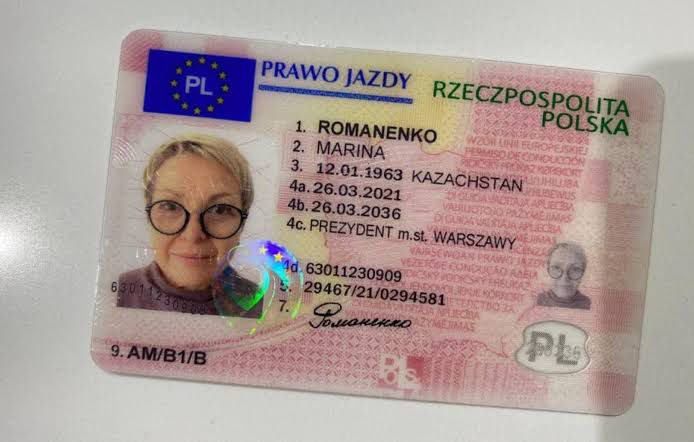10 Healthy Habits To Use Driving Licenses B
페이지 정보

본문
Understanding Driving Licenses: Types, Requirements, and Frequently Asked Questions
Driving is an essential element of contemporary life, and acquiring a driving license is a vital turning point for lots of individuals. This short article checks out the different types of driving licenses readily available, the requirements to get them, and answers commonly asked concerns related to the subject. A well-informed perspective on driving licenses can assist individuals comprehend the importance of choosing the proper type of license to meet their requirements.

Types of Driving Licenses
Driving licenses can vary in between countries and regions, however they generally fall into numerous major classifications. The following table sums up the most typical kinds of driving licenses, including their functions and common constraints.
| Type of License | Description | Common Restrictions | Eligibility Age |
|---|---|---|---|
| Learner's Permit | Allows novice motorists to practice. | Need to drive with a certified grownup. | 16-18 years of ages |
| Class C License | Requirement license for traveler lorries. | No restriction on variety of travelers. | 18 years or older |
| Class A License | Commercial license for large automobiles. | Need to abide by more stringent policies. | 21 years or older |
| Class B License | For driving buses and bigger cars. | May need unique endorsements. | 21 years or egzamin Teoretyczny na prawo jazdy older |
| Motorbike License | For operating motorcycles. | Need to use a helmet; varies by state. | 16-18 years of ages |
| International License | Permits legal driving in foreign countries. | Should possess a valid domestic license. | 18 years or older |
Learner's Permit
The learner's license is the initial step for numerous individuals venturing into the world of driving. This license allows amateur chauffeurs to practice driving under monitored conditions, usually requiring a certified adult over a specific age to accompany them in the lorry.
Class C License
The Class C license is the most commonly held driving license, enabling people to run standard traveler vehicles. This license generally has fewer constraints compared to other categories.
Class A and B Licenses
Class A and B licenses are required for running commercial cars. These licenses need special training and screening, making sure that drivers are geared up with the skills needed for navigating larger and more complicated automobiles securely.
Motorbike License
Individuals thinking about riding bikes need to obtain a motorbike license, which can need additional training and screening. Security equipment, such as helmets, is often mandated by law.
International License
A global driving license makes it possible for people to drive in foreign countries, but it is vital to have a valid domestic driving license in combination with the international authorization.
Requirements to Obtain a Driving License
The requirements for obtaining a driving license can vary significantly by jurisdiction. However, there prevail actions and criteria that the majority of applicants will encounter. Below is a list of basic requirements:
Age Requirement:
- Minimum age varies; student's permits are frequently released at 16, while full licenses might need candidates to be 18 or older.
Vision Test:
- Most jurisdictions require candidates to pass a vision test to make sure safe driving capabilities.
Composed Test:
- New drivers need to pass a composed exam that covers traffic laws, road indications, and safe driving practices.
Driving Test:
- Practical driving tests are carried out to show a candidate's ability to operate a lorry securely under numerous conditions.
Costs:
- Payment of application and screening fees is typically needed.
Evidence of Identity:
- Applicants need to offer valid recognition, such as a passport or birth certificate, along with evidence of residency.
Adult Consent (for minors):
- Parental or guardian approval is often needed for applicants under the age of 18.
Comprehending the various types of driving licenses and their associated requirements is important for anybody wanting to drive legally and safely. Each license serves a distinct purpose, dealing with different driving needs, from standard vehicles to industrial transportation and bikes. By satisfying the essential requirements and sticking to guidelines, striving chauffeurs can delight in the flexibility of driving while ensuring their safety and the safety of others.
Regularly Asked Questions (FAQs)
What do I require to bring when applying for a driving license?
- You generally require to supply recognition, evidence of residency, and any needed application charges. Talk to your regional DMV or licensing authority for particular requirements.
For how long does it require to get a driving license?
- The timeline can vary based upon specific circumstances, such as how rapidly one can finish the needed tests, and whether there is a stockpile at the licensing authority.
Can I drive with a student's authorization?
- Yes, but you must be accompanied by a certified motorist and stick to constraints set by your regional laws.
What occurs if I stop working the driving test?
- You normally have the alternative to retake the test after a designated waiting period, which varies by jurisdiction.
Is it necessary to take a driving course?
- While not always mandatory, taking a motorist's education course can be beneficial and is often required for individuals looking for a learner's license.
By being informed about the kinds of licenses offered, the requirements required for getting one, and the related policies, prospective chauffeurs can browse the procedure of obtaining a driving license with self-confidence.
- 이전글Почему мой Gorenje издает странные звуки как трактор и что с этим? Мой решения неисправности. 25.06.27
- 다음글This Week's Top Stories About Buy Fake Banknotes Buy Fake Banknotes 25.06.27
댓글목록
등록된 댓글이 없습니다.

